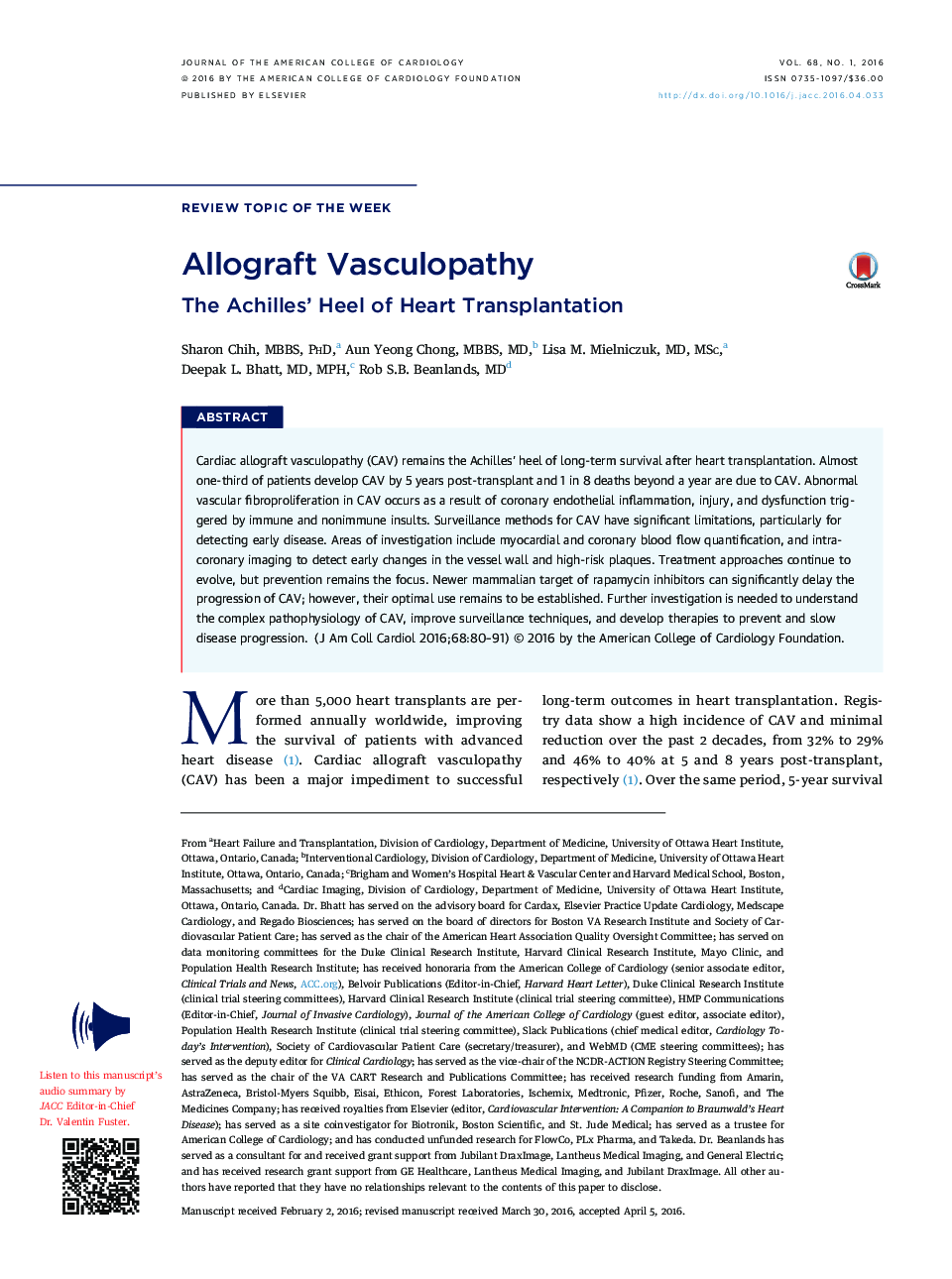| Article ID | Journal | Published Year | Pages | File Type |
|---|---|---|---|---|
| 5981615 | Journal of the American College of Cardiology | 2016 | 12 Pages |
Cardiac allograft vasculopathy (CAV) remains the Achilles' heel of long-term survival after heart transplantation. Almost one-third of patients develop CAV by 5 years post-transplant and 1 in 8 deaths beyond a year are due to CAV. Abnormal vascular fibroproliferation in CAV occurs as a result of coronary endothelial inflammation, injury, and dysfunction triggered by immune and nonimmune insults. Surveillance methods for CAV have significant limitations, particularly for detecting early disease. Areas of investigation include myocardial and coronary blood flow quantification, and intracoronary imaging to detect early changes in the vessel wall and high-risk plaques. Treatment approaches continue to evolve, but prevention remains the focus. Newer mammalian target of rapamycin inhibitors can significantly delay the progression of CAV; however, their optimal use remains to be established. Further investigation is needed to understand the complex pathophysiology of CAV, improve surveillance techniques, and develop therapies to prevent and slow disease progression.
